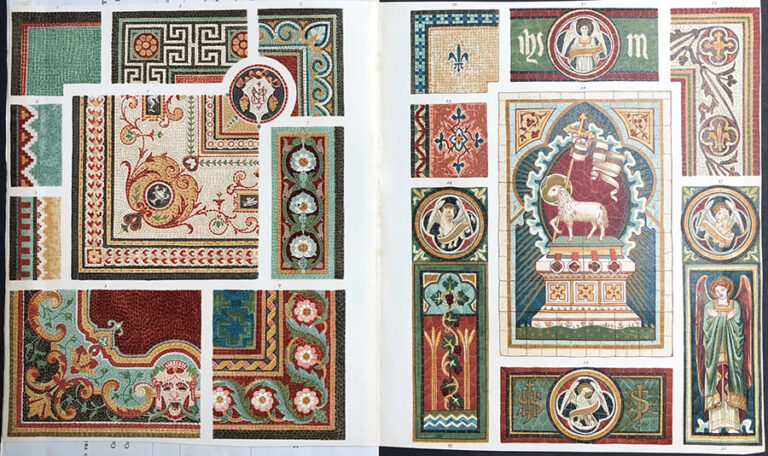The National Archives holds an incredible collection of artwork submitted to the Stationers’ Company for copyright protection between 1862 and 1912. To protect any artwork (paintings, drawings or designs) under the Fine Arts Copyright Act, individuals and companies had to send an example of the work, with an attached registration form, to Stationers’ Hall. These records are today held in record series COPY 1 at The National Archives.
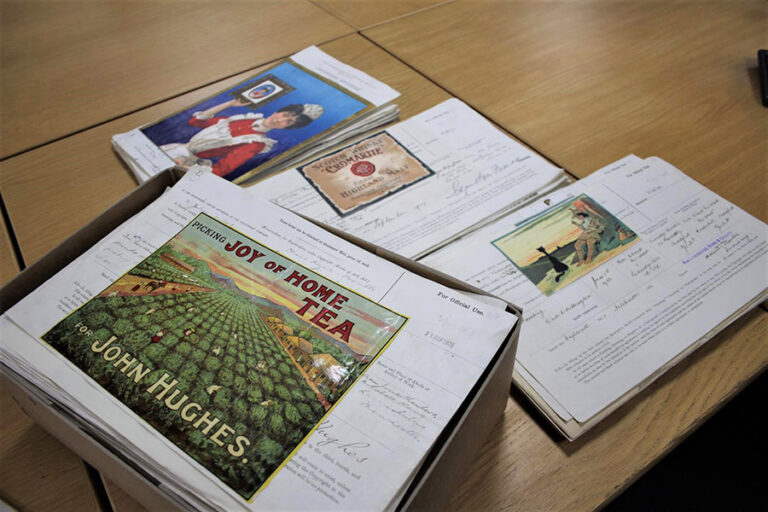
The collection includes amazing examples of 19th-century art, illustration and advertising. One can find posters and packaging for famous brands, fashion plates, designs for board games, greetings cards and stationery, book illustrations and much more. The records are arranged chronologically and for many years have been difficult to access, which is why detailed cataloguing is so important.
Volunteer cataloguing
For the last few years, volunteers have been working at Kew to catalogue this material, meticulously transcribing the registration forms into spreadsheets ready to be uploaded to our online catalogue, Discovery. During the COVID-19 lockdown, some of this work has also been transferred online. Volunteers all over the world have been able to continue cataloguing digitised material on the From the Page platform.
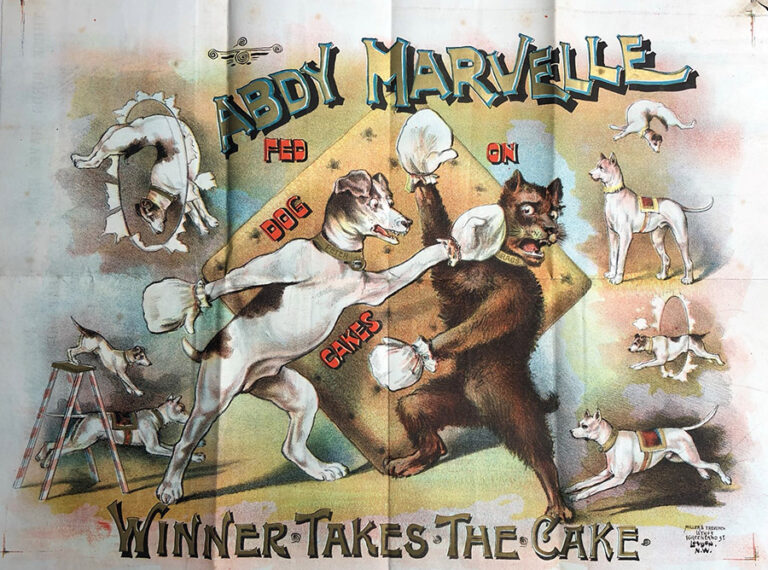
Cataloguing this collection can be an incredibly rewarding experience, while at the same time being very challenging. As every entry form was completed by a different person, the legibility of the handwriting varies enormously and you have to get used to a new style at the turn of every page. Those completing the forms were also not always meticulous, despite the instruction printed on the form that ‘every particular must be clearly written’! Clarifying the precise transcription often involves some additional online research on the artists, designers and companies to identify the correct addresses and spellings.
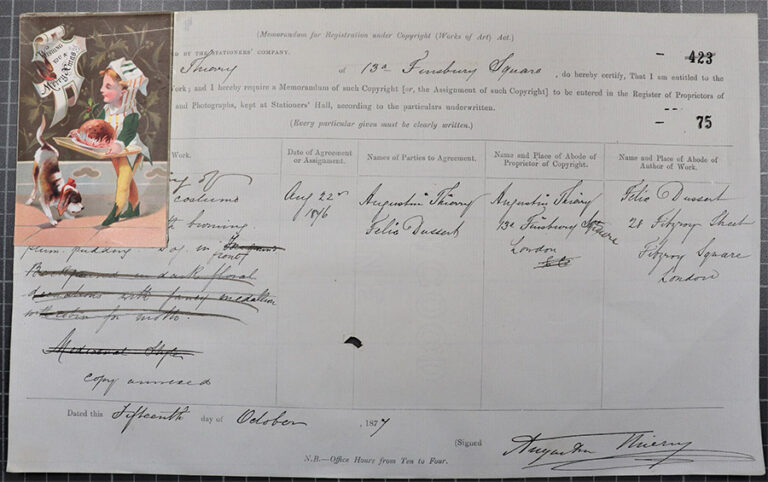
Images attached to the forms also vary in size. Sometimes those registering their artwork wanted to include very large images and so they folded them multiple times to fit them in. Time has rendered some types of paper quite fragile, making it a tricky collection to work with physically at times.
Making the collection accessible
The reason this work is so important is that it will make the collection fully accessible. Researchers will have the ability to search the catalogue for names of artists and designers, companies and keywords to find out what kind of images were being registered and who was working in the creative industries at the time.
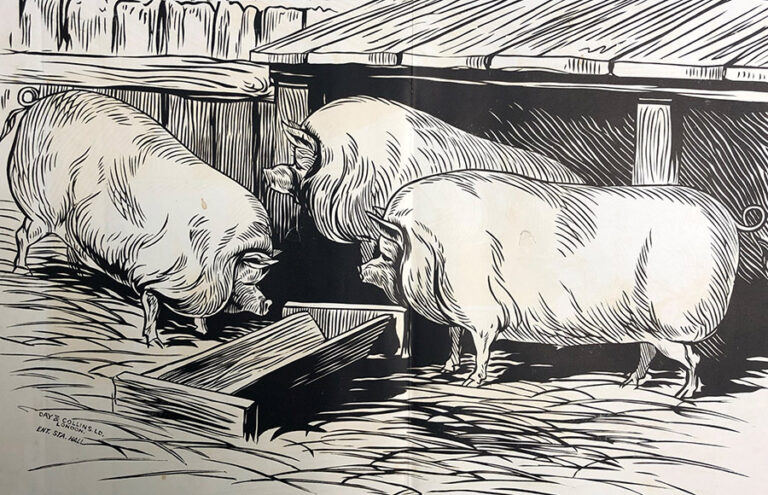
While this project is in its early stages, we can already see how useful the improved cataloguing will be. To demonstrate this, I’ve taken all the information catalogued for one complete year, 1893, and started to interrogate it.
In 1893, there were 2,847 works submitted for copyright protection, an average of about 225 per month, and they are held in four items in our catalogue: COPY 1/107 – COPY 1/110. The graph below shows how many registrations there were each month in 1893.
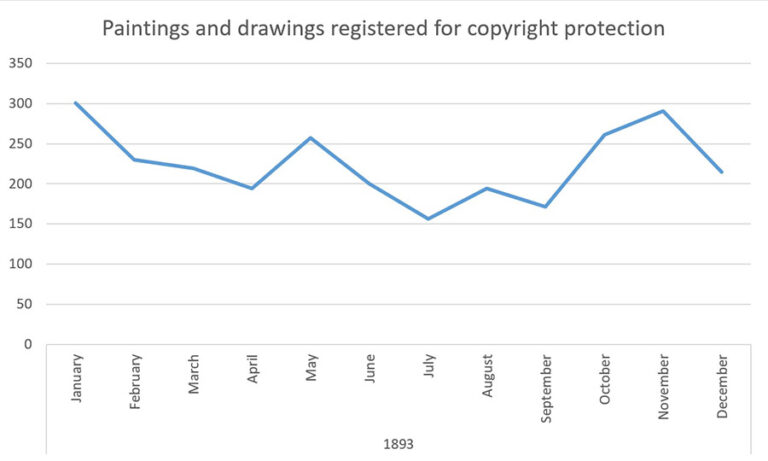
Topics and people
With a bit of additional analysis using the programming language Python and a natural language processing library called SpaCy, one can easily separate the different elements of the text. In the word cloud below (created using a free word cloud generator at wordart.com) you can see the most commonly used nouns in the descriptions of the artwork, giving us a simple indication of the kinds of subjects present.
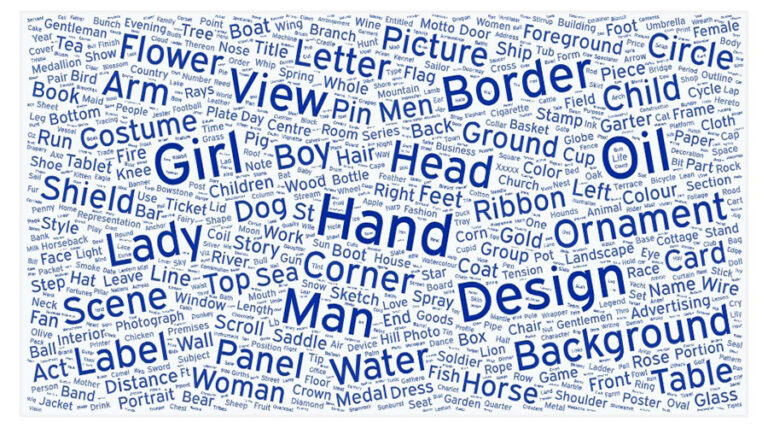
Human subjects do appear to be most common, however terms like ‘view’ may indicate the presence of a good number of landscapes. The term ‘oil’ suggests that there is a large number of copies of oil paintings; in the original records, these are usually photographs or sketches of the actual oil painting being registered for copyright protection. The photograph below is one such example.
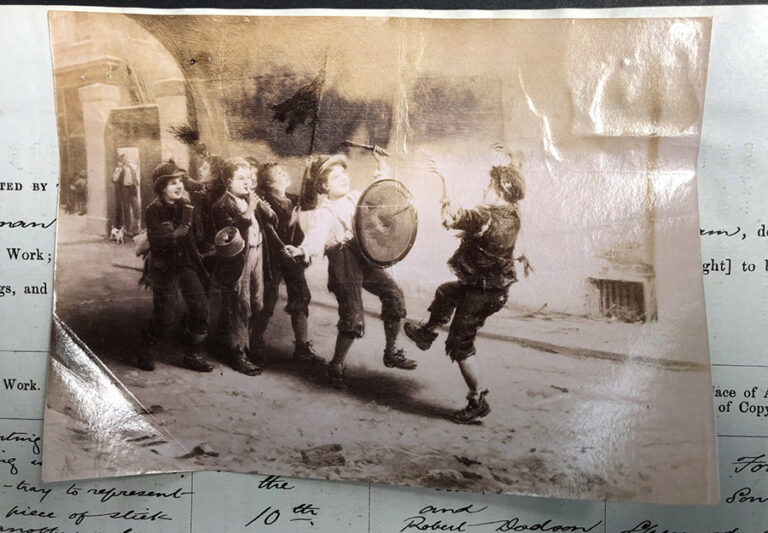
‘Girl’ and ‘man’ are the most common terms for human subjects. Looking further into the data, we can see that there are 418 works which use the terms ‘girl/s’, ‘woman/women’ or ‘lady/ladies’ and there are 356 works which use the terms ‘boy/s’, ‘man/men’ or ‘gentleman/men’ in their descriptions.
With full transcriptions in the catalogue, it also means it is easier to find specific individuals, both as subjects and artists. The portraits below are of the Duke of York, later King George V, and Princess May of Teck, drawn in crayon by artist Alfred Hossack a few months before their wedding. Again like the previous example, these are photographs of the original drawings.
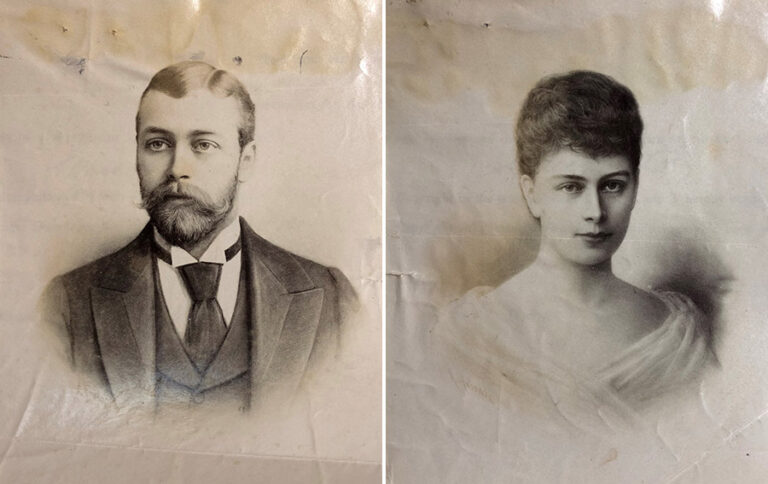
Mapping the collection
Having detailed catalogue data in this way also opens up opportunities for studying locations. The data contains addresses for both the owners of copyright and the artists themselves. This map shows many of the locations of the artists and designers who created each work which was being registered.
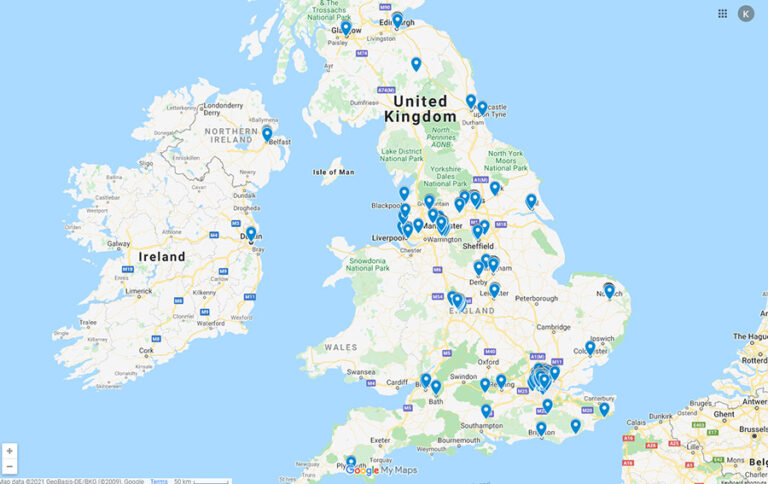
Getting involved
If you’re interested in getting involved in this cataloguing project, please visit the project page on From the Page. You can view the wonderful artwork and help to transcribe the entry forms online from wherever you are! For information about how to conduct research using these records, you can consult our detailed research guide on copyright.
